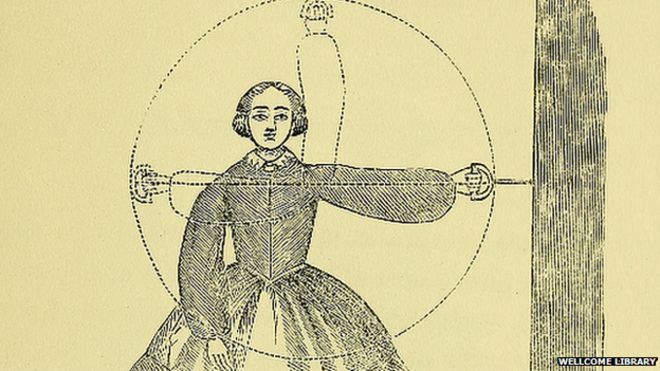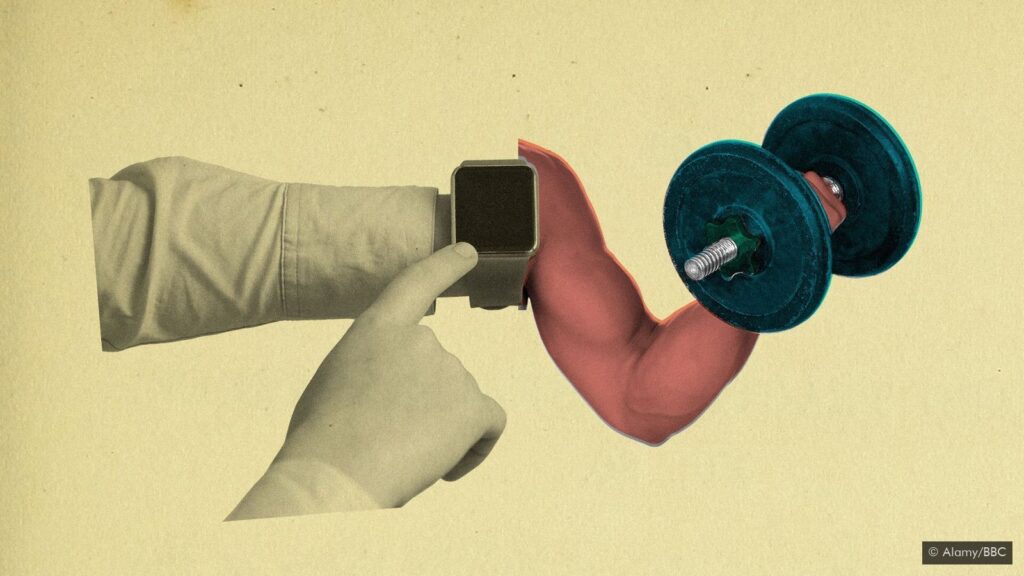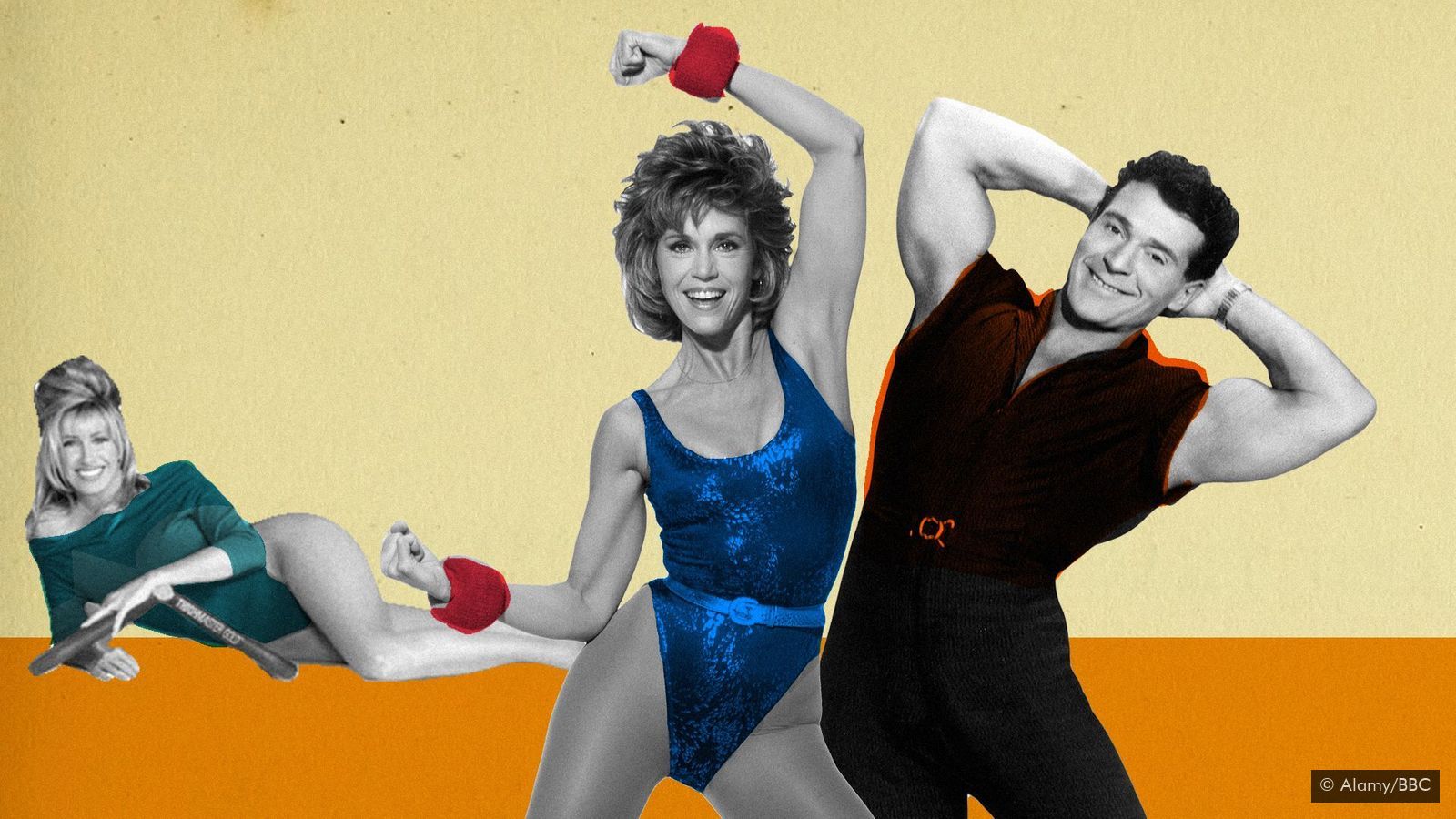By Bryan Lufkin 2020
Home fitness has been around for a long time, but it has taken on a new role since the pandemic shut down the gym around the world.
At first home fitness is mostly geared toward women
‘fitness’ as we know it today is a relatively new construct, not even 200 years old. One of the earliest examples comes from an illustrated guidebook written in 1861 in Victorian England, which shows women in petticoats and men in neckties exercising different muscle groups. The idea for the daily regimen came from Gustav Ernst, an orthopaedic machinist in London who invented the portable home gym, a device made of mahogany boards, cords, weights and pulleys.

Home fitness as we know it in the West started to appear sometime after World War Two, with the US behind many of the trends that subsequently swept the globe. Many Americans had bigger homes after the war, plus a huge technological innovation: the television. The economy was booming, young married couples moved to suburbs, people were driving more and public health concerns about obesity started to emerge.
Trends towards open-plan living and technological developments fueled the appetite for staying healthy, conveniently, at home – James Stark
Traditionally, men went off to work each day while women stayed at home to do housework. These women became the main target for the nascent home fitness industry, with fitness promoted to them as a key element of their beauty routine.
In 1951, fitness guru Jack LaLanne began broadcasting an exercise TV show largely geared towards housewives.“With the women exercising at home for Jack LaLanne, it was just a beauty standard: ‘OK, I gotta get this over with, check the box, and then I can go have my martini and my cigarette’.
TV, gadgets and the gym
Over the next two decades, personal fitness began moving outside the home and took on a more strenuous tone with the advent of jogging culture. “Exercise and fitness became a lifestyle,” Hejtmanek says, and one that came with a new wardrobe – think leggings, headbands, tank tops, and leg warmers. Gyms began opening; bright destinations offering mirrors and group classes, often connected to the offices of big corporations to lure in yuppies.
There’s a “broad social embrace of fitness as something we should be doing, even in our downtime, even when we’re at home and theoretically supposed to be relaxing” – Natalia Mehlman Petrzela
Then the world of fitness was reshaped by another key technological innovation: the VHS video tape. American actress Jane Fonda stormed onto the scene in 1982 with her Jane Fonda’s Workout video tape which, again, targeted women at home.

Next came the home gym. These expensive machines – like Nordic Track’s in-home treadmills, ellipticals, or stationary bikes – filled home basements across the world in the 1990s. And all these products served to promote the idea that we should be maximizing time and self-improvement. Before Covid-19, the fitness and “wellness” industries seeped into our tech, fashion, and mental health pursuits. But in quarantine, home fitness is the focus.
The internet and age of Covid-19
Working out isn’t just about staying in shape; the lines between fitness and the self-help movement have become blurred. “We need exercise not just as a beauty regimen now, and not just as a heart and health situation, now we need to do it for our mental health. This is now a burden in all of our realms,” says Hejtmanek.
Now, with gyms closed and outings comprehensively curtailed, we’re all innovating; fitness instructors have been quick to move online, yoga classes have taken to Zoom, and sales of exercise equipment and downloads of fitness apps are all on the rise. Between January and March in the US, for example, sales of fitness equipment shot up 55% as lockdowns began to be activated. Some gyms are even introducing “foster” programs for their equipment during the pandemic – lending out machines to members for a fee.
Gyms fulfill quite a different social role. They are places where exercises done by individuals can be communal and competitive,” he says. “When the lockdown is phased out and then ends, it is much more likely that people will flock back to gyms and sports fields to recapture the vital social, human contact which is also integral to exercise for so many.
–
The article gives us a holistic view of the evolution of home fitness. Fitness, a concept that is less than 200 years old, is making its way into our lifestyle. It has become more than just simply staying in shape. It’s interesting that home fitness for the longest time was targeting women in particular. As the pandemic changing our routines, it might make home fitness more inclusive for men and children as well.




